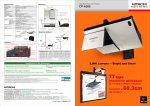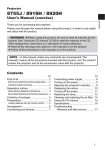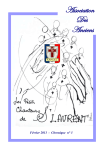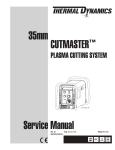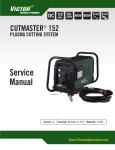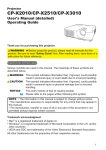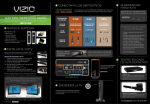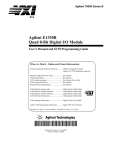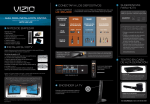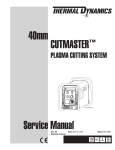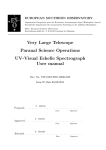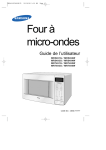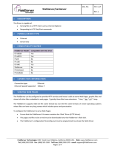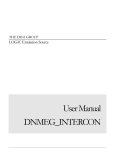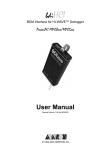Download HPK-IN001 - Rockwell Automation
Transcript
Installation Instructions HPK-Series Asynchronous Servo Motors Catalog Numbers HPK-B1307, HPK-E1307, HPK-B1308, HPK-E1308, HPK-B1310, HPK-E1310, HPK-B1609, HPK-E1609, HPK-B1611, HPK-E1611, HPK-B1613, HPK-E1613, HPK-B1815, HPK-E1815, HPK-B2010, HPK-E2010, HPK-B2212C, HPK-E2212C, HPK-B2510C Topic Page Important User Information 2 Motor Catalog Number Identification 3 Before You Begin 4 Installation and Maintenance Guidelines 4 Installing an HPK Motor 11 Product Dimensions 15 Motor Connectors 26 Load Force Capacities 27 Troubleshooting and Maintenance 29 Shaft Key Removal and Installation 32 Motor Cables and Accessory Kits 33 Specifications 33 Additional Resources 34 About This Publication This publication provides installation instructions for the HPK-Series asynchronous motors with a frame size of 1307 mm (51.5 in.), 1600 mm (63.0 in.), 1815 mm (71.5 in.), 2010 mm (79.1 in.), 2212 mm (86.7 in.), or 2510 mm (98.8 in.). Use this document if you are responsible for installing these Allen-Bradley motors. Please read all instructions before installing this motor. 2 HPK-Series Asynchronous Servo Motors Important User Information Solid state equipment has operational characteristics differing from those of electromechanical equipment. Safety Guidelines for the Application, Installation and Maintenance of Solid State Controls, publication SGI-1.1, is available from your local Rockwell Automation sales office or online at http://www.rockwellautomation.com/literature. It describes some important differences between solid state equipment and hard-wired electromechanical devices. Because of this difference, and also because of the wide variety of uses for solid state equipment, all persons responsible for applying this equipment must satisfy themselves that each intended application of this equipment is acceptable. In no event will Rockwell Automation, Inc. be responsible or liable for indirect or consequential damages resulting from the use or application of this equipment. The examples and diagrams in this manual are included solely for illustrative purposes. Because of the many variables and requirements associated with any particular installation, Rockwell Automation, Inc. cannot assume responsibility or liability for actual use based on the examples and diagrams. No patent liability is assumed by Rockwell Automation, Inc. with respect to use of information, circuits, equipment, or software described in this manual. Reproduction of the contents of this manual, in whole or in part, without written permission of Rockwell Automation, Inc., is prohibited. Throughout this manual, when necessary, we use notes to make you aware of safety considerations. WARNING: Identifies information about practices or circumstances that can cause an explosion in a hazardous environment, which may lead to personal injury or death, property damage, or economic loss. ATTENTION: Identifies information about practices or circumstances that can lead to personal injury or death, property damage, or economic loss. Attentions help you to identify a hazard, avoid a hazard, and recognize the consequences. SHOCK HAZARD: Labels may be located on or inside the equipment, for example, a drive or motor, to alert people that dangerous voltage may be present. BURN HAZARD: Labels may be located on or inside the equipment, for example, a drive or motor, to alert people that surfaces may be dangerous temperatures. IMPORTANT Identifies information that is critical for successful application and understanding of the product. Publication HPK-IN001C-EN-P - June 2010 HPK-Series Asynchronous Servo Motors 3 Motor Catalog Number Identification HPK - B 1307 C- S A 4 2 A A FACTORY DESIGNATED OPTIONS A = Standard MOUNTING TYPE/SHAFT KEY A = IEC Metric, Free Mounting Holes (Type FF), Foot and Flange Mount, Keyed Shaft B = IEC Metric, Free Mounting Holes (Type FF), Foot Mount Only, Keyed Shaft BRAKE 2 = No Brake 4 = 380…460V ac Brake CONNECTORS 4 = Right-angle Rotatable BLOWER/JUNCTION BOX A = Inline Blower, F3 Jx Box B = Top-mount Blower, F1 Jx Box C = Top-mount Blower, F2 Jx Box FEEDBACK M = Multi-turn High Resolution Encoder S = Single-turn High Resolution Encoder RATED SPEED (rpm) C = 1500 E = 3000 FRAME SIZE (mm) 1307 1308 1310 1609 1611 1613 1815 2010 2212 2510 VOLTAGE RATING B = 460V ac E = 400V ac BULLETIN HPK = Asynchronous Servo Publication HPK-IN001C-EN-P - June 2010 4 HPK-Series Asynchronous Servo Motors Before You Begin Before unpacking the product, inspect the shipping carton for damage. If damage is visible, immediately contact the shipper and request assistance. Otherwise, proceed with unpacking. Remove the motor carefully from its shipping container, and visually inspect the motor for any damage. Carefully examine the motor frame, front output shaft, and mounting pilot for any defects. Motors are shipped with wooden blocking to prevent axial movement of the shaft during shipment. Remove the blocking and bolts securing it and verify that the motor shaft turns freely. If motor is to be shipped or placed in long-term storage, blocking of the bearing is recommended. Keep the original packing material in case you need to return the product for repair or to transport it to another location. Use both the inner and outer packing cartons to provide adequate protection for a unit returned for service. ATTENTION: Do not attempt to open and modify the motor. Modifications that can be performed in the field are described in this manual; other changes should not be attempted. Only a qualified Allen-Bradley employee can service this type of motor. Failure to observe these safety procedures could result in personal injury or damage to equipment. Installation and Maintenance Guidelines The guidelines in this section provide you with information about installing servo motor so it provides safe and reliable service. Handling Exercise care when lifting the motor. Always lift in the direction intended in the design of the lifting mechanism, and lift using all of the eyebolts or lifting lugs provided. ATTENTION: Eyebolts or lifting lugs are intended for lifting only the motor and factory mounted accessories. Do not mount additional equipment before lifting and securing the motor. Failure to observe this precaution could result in bodily injury. The angle of lift formed by a lifting rope or chain must be greater than 45 degrees from horizontal. Diagrams are provided that show proper rigging and lift practices. Publication HPK-IN001C-EN-P - June 2010 HPK-Series Asynchronous Servo Motors 5 Take precautions during a lift to prevent hazardous overload due to deceleration, acceleration, or shock forces caused by abrupt raising or lowering, or swinging and twisting of a suspended motor. ATTENTION: Eyebolts may unscrew during lifting. Prior to lifting, check the eyebolts to verify that they are tight and attach lifting equipment to restrict turning during the lift. Alternatively, lift the unit on a platform or with a sling. Failure to observe this precaution could result in bodily injury. Lifting Guidelines 45° >1/ 2 A A For unusual conditions, such as side-wall and ceiling mounting of horizontal motors and installation of vertical motors shipped in a horizontal position, special precautions must be taken. We recommend that an experienced rigger be employed. To Prolong Motor Life Thoughtful design and proper maintenance can increase the life of a servo motor. The following are guidelines to maximize the life of a servo motor. • Always provide a drip loop in a cable to reduce the potential for moisture related problems. A drip loop is a downward bend in the cable that lets water gather and drip off the cable rather than continue to flow along the cable. • Avoid installing the motor with the shaft pointing upward. This orientation increases the risk of contaminant ingress. • Environmentally-sealed connectors and cables are required to achieve an International Protection (IP) rating of IP54 for the motor. Publication HPK-IN001C-EN-P - June 2010 6 HPK-Series Asynchronous Servo Motors Cable Orientation for Drip Loop Cables enter from below. A drip loop is formed in each cable. Cables enter from above. Drip loops are not formed. • Brakes on these servo motors are holding brakes. The brakes are spring-set, and release when voltage is applied to the brake coil. A separate power source is required to disengage the brake. This power source may be applied by a servo motor controller, in addition to manual operator control. If system main power fails, holding brakes can withstand occasional use as stopping brakes. However, this creates rotational mechanical backlash that is potentially damaging to the machine, increases brake wear, and reduces brake life. IMPORTANT Holding brakes are not designed to stop rotation of the motor shaft, nor are they intended to be used as a safety device. They are designed to hold a motor shaft at 0 rpm for up to the rated brake holding torque. The recommended method of preventing motor shaft rotation is a four step process: first - command the servo drive to 0 rpm; second - verify the motor is at 0 rpm; third - engage the brake; and fourth - disable the drive. Disabling the drive removes the potential for brake wear caused by a badly tuned servo system oscillating the shaft. Mechanical Connections Mechanical connections to the motor shaft, such as couplings and pulleys, require a torsionally rigid coupling or a reinforced timing belt. The high dynamic performance of servo motors can cause couplings, pulleys, or belts to loosen or slip over time. A loose or slipping connection will cause system instability and may damage the motor shaft. All connections between the machine and the motor shaft must be rigid to achieve acceptable system response. Periodically inspect connections to verify their rigidity. Publication HPK-IN001C-EN-P - June 2010 HPK-Series Asynchronous Servo Motors 7 When mounting couplings or pulleys to the shaft, verify that the connections are properly aligned and that axial and radial loads are within the motor specifications. ATTENTION: Do not strike the shaft, key, couplings, or pulleys with tools during installation or removal. Damage may occur to the motor bearings and the feedback device if sharp impact to the shaft is applied during installation of couplings and pulleys, or a shaft key. Damage to the feedback device also may result by applying leverage from the faceplate to remove devices mounted on the motor shaft. To remove a friction-fit or stuck device, apply a constant pressure to the user end of the shaft with a wheel puller. Failure to observe these procedures could result in damage to the motor and its components. A shaft key provides a rigid mechanical connection with the potential for self-alignment, but the key must be properly installed in the keyway. The Product Dimensions section provides sizing information on the key and shaft keyway. Refer to the Shaft Key Removal and Installation section for recommendations on how to remove and install a shaft key. Requirements for Mounting HPK-Series asynchronous motors have a mounting pilot for aligning the motor on a machine. The installation must comply with all local regulations and use of equipment and installation practices that promote electromagnetic compatibility and safety. ATTENTION: Unmounted motors, disconnected mechanical couplings, loose shaft keys, and disconnected cables are dangerous if power is applied. Disassembled equipment should be appropriately identified (tagged-out) and access to electrical power restricted (locked-out). Before applying power to the motor, remove the shaft key and other mechanical couplings that could be thrown from the shaft. Failure to observe these safety procedures could result in personal injury. • The motor shaft and the load shaft must be parallel and pulleys aligned. • Pulleys, gears, and similar devices should be mounted as close as practical to the front motor bearing to minimize bearing load. • Flexible couplings may be used between the motor shaft and a load shaft. The motor shaft and load shaft must be aligned to values recommended for the specific coupling before coupling is connected. • Stainless steel fasteners are preferred for mounting the motor. Publication HPK-IN001C-EN-P - June 2010 8 HPK-Series Asynchronous Servo Motors Allow sufficient clearances in the area of the motor for it to stay within its specified operating temperature range. Refer to Specifications for the operating range. Do not install the motor in an area with restricted airflow. Keep other heat producing devices away from the motor. IMPORTANT Sufficient clearance must be provided on all inlet and outlet openings to provide for unrestricted flow of air. Allow at least 152 mm (6.0 in.) of clearance between the blower exhaust opening and adjacent walls or floor. Recommended mounting bolts and the torque values are listed below. Motor Hole Diameter HPK-B and HPK-E mm (in.) 1307 12 (0.47) 1308 1310 15 (0.60) 1609 1611 Recommended Torque Bolt Grade 8.8 Bolt Grade 12.9 N•m (lbs.) N•m (lbs.) M10-1.5 8.8 (78) 12.9 (114) M10-1.5 50 (442) 72 (637) M12-1.75 126 (1115) 158 (1398) M16-2.5 238 (2106) 337 (2983) M16-2.5 420 (3717) 596 (5275) M22-2.5 658 (5823) 934 (8266) M10-1.75 19 (0.75) 1613 1815 Bolt Size and Thread 24 (0.95) 2010 M22-2.5 2212 19 (0.75) M16-2.5 420 (3717) 596 (5275) 2510 21 (0.81) M20-2.5 495 (4381) 920 (8142) Refer to Load Force Capacities to determine the radial and axial shaft load limitations of your motor. Publication HPK-IN001C-EN-P - June 2010 HPK-Series Asynchronous Servo Motors 9 Interconnect Cables Knowledgeable cable routing improves system electromagnetic compatibility (EMC). Refer to Grounding of Signal Wire Shields Within a Cable for suggested cable trim lengths, and for cable shield grounding at the motor frame. IMPORTANT The recommended wire size is based on motor current requirements and terminal block sizing. Consult your local electrical code before selecting wire gauge for your application To install the cables: • Keep wire lengths as short as physically possible. • Route signal cables away from motor and power wiring. Typical signal cables transmit encoder, serial, or analog data at low voltages. • Separate cables by 0.3 m (1 ft) minimum for every 9 m (30 ft) of parallel run. • Ground both ends of the cable shield and twist the signal wire pairs to prevent electromagnetic interference from other equipment. ATTENTION: High voltage can be present on power cable shielding, if the shielding is not grounded. Verify there is a connection to ground for all power cable shielding. Failure to observe these safety procedures could result in personal injury or damage to equipment. Electrical Noise Electromagnetic interference (EMI), commonly called noise, may adversely impact motor performance by inducing stray signals. Effective techniques to counter EMI include filtering the ac power, shielding and separating signal carrying lines, and practicing good grounding techniques. Effective ac power filtering can be achieved by using isolated ac power transformers or properly installed ac line filters. The effect of EMI on motor signals can be minimized by two installation practices. • Physically separate signal lines from motor cabling and power wiring. Do not route signal wires with motor and power wires, and do not route signal wires over the vent openings of servo drives or other electrical power sources. • Ground all equipment using a single-point parallel ground system that employs ground bus bars or large straps. If necessary, use additional electrical noise reduction techniques to reduce EMI in a noisy environment. Publication HPK-IN001C-EN-P - June 2010 10 HPK-Series Asynchronous Servo Motors Power Cable Shielding HPK-Series motors with brakes integrate the brake signals (BR+ and BR-) with the 380…460V power at the terminal block. The separate shield surrounding the brake signals must be grounded to the overall system ground. To properly ground the brake ground shield, or any separately shielded signal, follow these wiring guidelines. Verify each cable shield connects to the overall chassis ground by routing as shown in diagram. Clamp all shields together at the power cable (chassis) ground connection on the drive. ATTENTION: High voltage can be present on the shields of a power cable, if the shields are not grounded. Verify that there is a connection to ground for each shield in the power cable. Failure to observe these safety procedures could result in personal injury or damage to equipment. Power Cable Shielding Cable as Supplied } Two Shielded Signal Wires within Cable Overall Cable Shield Cable Field Modified Signal Shield (one of two) Customer loops to contact Overall Cable Shield. Attach to Cable Ground Clamp on Drive Clamp must contact all cable shields. Publication HPK-IN001C-EN-P - June 2010 HPK-Series Asynchronous Servo Motors 11 Installing an HPK Motor Observe the following when installing an HPK-Series motor. ATTENTION: Do not strike the shaft, couplings, or pulleys with tools during installation or removal. Damage may occur to the motor bearings and the feedback device if sharp impact to the shaft is applied during installation of couplings and pulleys. Failure to observe these procedures could result in damage to the motor and its components. 1. Rotate the wiring junction box and position the motor so the junction box may be accessed for initial wiring and occasional verification of and maintenance to the wiring connections. Refer to Cable Orientation for Drip Loop on page 6 for a visual reference of correct motor and cable positioning. 2. Properly mount the motor. Refer to the motor outline drawings for dimensions. If necessary, shim the motor to achieve proper alignment of the shaft. 3. Align the motor shaft on the index pulse. The index pulse occurs on a single-turn encoder when the shaft key is aligned with the top of the motor. Refer to the motor outline drawings for a visual reference of this alignment. 4. Form a drip loop in the cables directly before each cable enters the motor. A drip loop lets liquids gather and drip off the cable rather than flow along the cable to an electrical connection or the motor. Refer to Cable Orientation for Drip Loop on page 6 for a visual example. ATTENTION: Be sure that feedback cable is installed and restrained to prevent uneven tension or flexing at the cable connector. Excessive and uneven lateral force at the feedback connector may result in the connector’s environmental seal opening and closing as the cable flexes. Failure to observe these safety procedures could result in damage to the motor and its components. 5. Remove the access cover on the junction box, and rotate the box in 90° increments to improve cable access. Publication HPK-IN001C-EN-P - June 2010 12 HPK-Series Asynchronous Servo Motors 6. Route power cables into the junction box. The recommended wire size is based on motor current requirements and terminal block sizing. Consult your local electrical code before selecting wire gauge for your application. IMPORTANT The table lists the access hole diameters for the junction box, and the maximum width of the wire terminal inside the junction box. Motor Catalog No. HPK-x1307, HPK-x1308, HPK-x1310 Dia. A, Max. Dia. B, Max. Wire Terminal Max Width mm (in.) mm (in.) mm (in.) 35 (1.4) 21 (0.84) 19 (0.75) HPK-x1609, HPK-x1611, HPK-x1613 45 (1.8) 20 (0.825) HPK-x1815, HPK-x2010, HPK-x2212, HPK-B2510 (1) Blank access plate 63.5 (2.5) spacing of copper bus bars (1) Wire selection and access port sizing are determined and performed by the end user as they are application dependent. The diagram below depicts the threaded access ports on the HPK-x13xx and HPK-x16xx motors, and the connector block or terminal strip connections. ATTENTION: Unshielded power connections should not extend beyond the terminal block body. Failure to observe these safety procedures could result in damage to the motor, cables, and connector components. HPK-x13xx and HPK-x16xx Power Cable Access and Wiring Dia. A External View of Junction Box Showing Access Port Locations Dia. B Ground and Shield Connect to Lug U V W Internal View of Junction Box Showing Terminal Block Wiring To HPK Motor Terminal Blocks Max. Width of Wire Terminal LINE 1 Publication HPK-IN001C-EN-P - June 2010 LINE 2 LINE 3 From Input Power HPK-Series Asynchronous Servo Motors 13 7. Connect the power cable leads (U/T1, V/T2, and W/T3) to the power terminals. 8. Connect the ground and shield connect to the ground lug. AC Input to Motor Connect Input with Wire Color to Terminal M8 Clamping Bolt Torque M6 Cover Threaded Bolt Torque Line 1 Black U/T1 14 N•m (1.6 lb-in.) 8 N•m (0.9 lb-in.) Line 2 Blue V/T2 Line 3 Brown W/T3 Ground Green/Yellow GND Shield Yellow/Green 9. Connect the other end of the power cable to the three-phase 380…460V AC power outputs on the controller as described in the instruction manual for that device. ATTENTION: The motor is at line voltage when ac power is connected. Disconnect and lockout all ungrounded conductors of the ac power line before attempting any to connect or disconnect power wiring at the motor. Failure to observe these precautions could result in severe bodily injury or loss of life. Proper grounding of power cable shielding is essential for error-free operation. Refer to the instruction manual of your drive for recommended grounding techniques. 10. Connect blower leads to the three-phase 380…460V ac power source as outlined in the table below and shown in the Blower Wiring Diagrams on page 14. AC Input to Blower (380…460V) Connect Input with Wire Color to Terminal Line 1 Black U Line 2 Blue V Line 3 Brown W Ground Green/Yellow GND Publication HPK-IN001C-EN-P - June 2010 14 HPK-Series Asynchronous Servo Motors Blower Wiring Diagrams DELTA T6 T4 T1 STAR T5 T2 L1 L2 T3 L3 Low Volts Line W2 U2 U1 L1 L2 T4 T5 T1 T2 T3 L1 L2 L3 High Volts Line V2 V1 T6 W1 L3 Low Volts Line W2 U2 V2 U1 V1 W1 L1 L2 L3 High Volts Line U1 = Black V1 = Blue W1 = Brown U2 = Green V2 = White W2 = Yellow 11. Attach the feedback cable to the motor as follows: ATTENTION: Keyed connectors must be properly aligned and hand-tightened the recommended number of turns. Improper connector alignment is indicated by the need for excessive force, such as the use of tools, to fully seat connectors. Failure to observe these safety procedures could result in damage to the motor, cables, and connector components. a. Carefully align the feedback cable connector with the respective motor connector. b. The flat surface with logo on each connector should align. Do not apply excessive force when mating the cable and motor connectors. If the connectors do not go together with light hand force, realign and try again. c. Fully seat the feedback connector by hand tightening the knurled collar five to six turns until resistance is felt. 12. Perform the Troubleshooting and Maintenance procedures listed below that are appropriate to your installation. • • • • Bearing Inspection Periodic Lubrication Grease and Repack Bearings Shaft Key Removal and Installation Publication HPK-IN001C-EN-P - June 2010 HPK-Series Asynchronous Servo Motors 15 Product Dimensions The figures show dimension symbols for the HPK-Series motors, and these dimensions are provided in tables. Motors are designed to metric dimensions. Inch dimensions are approximate conversions from millimeters. Dimensions without tolerances are for reference. TIP HPK-Series Motor (Non-brake) Dimensions (HPK-B/E13xx and HPK-B/E16xx) Junction box rotates in 90° increments. F3 mount (top) location is shown. Airflow Clearance Required LA Encoder Connector T N BD BE EA C B E B1 B2 BA BB BC C1 L Shaft Diameter Tolerances: HPK-B/E 1307, 1308, 1310 Ø 48.003…48.016 (1.8899…1.8904) HPK-B/E 1609, 1611, 1613 Ø 55.011…55.030 (2.1658…2.1665) F D G GA Shaft Key: HPK-B/E 1307, 1308, 1310 = 14 X 9 X 80 HPK-B/E 1609, 1611, 1613 = 16 X 10 X 90 HB P H S = Diameter of Holes M = Diameter of Bolt Circle Pilot Diameter Tolerances: HPK-B/E 1307, 1308, 1310 Ø 249.99…250.02 (9.842…9.844) HPK-B/E 1609, 1611, 1613 Ø 299.99…300.02 (11.809…11.811) HC HD A AB AC K Publication HPK-IN001C-EN-P - June 2010 16 HPK-Series Asynchronous Servo Motors HPK-Series Motor (Non-brake) Dimensions (HPK-B/E13xx and HPK-B/E16xx) Motor Series A AA AB AC B B1 B2 BA HPK-B/E mm (in.) mm (in.) mm (in.) mm (in.) mm (in.) mm (in.) mm (in.) mm (in.) 1307 216 (8.50) 108 (4.25) 260 (10.2) 279 (10.9) 333 (13.1) 365 (14.3) 390 (15.3) 154 (6.06) 1308 371 (14.6) 403 (15.8) 428 (16.8) 1310 403 (15.8) 435 (17.1) 462 (18.1) N/A 414 (16.3) 452 (17.8) 1611 N/A 464 (18.2) 502 (19.7) 1613 N/A 515 (20.2) 548 (21.5) 1609 254 (10.0) 127 (5.0) 313 (12.3) 332 (13.0) 170 (6.69) Motor Series BB BC BD BE C C1 D E HPK-B/E mm (in.) mm (in.) mm (in.) mm (in.) mm (in.) mm (in.) mm (in.) mm (in.) 1307 187 (7.36) 95.0 (3.74) 91.0 (3.58) 300 (11.8) 89.0 (3.50) 57.0 (2.24) 48.0 (1.89) 110 (4.33) 1308 226 (8.90) 338 (13.3) 1310 257 (10.1) 369 (14.5) 1609 225 (8.86) 108 (4.25) 82.0 (3.23) 55.0 (2.16) 110 (4.33) 1611 276 (10.8) 1613 327 (12.8) 95.0 (3.74) 130 (5.12) 321 (12.6) 372 (14.6) 125 (4.92) Publication HPK-IN001C-EN-P - June 2010 423 (16.6) HPK-Series Asynchronous Servo Motors 17 HPK-Series Motor (Non-brake) Dimensions (HPK-B/E13xx and HPK-B/E16xx) Motor Series EA F G GA H HB HC HD HPK-B/E mm (in.) mm (in.) mm (in.) mm (in.) mm (in.) mm (in.) mm (in.) mm (in.) 1307 52.0 (2.05) 13.9 (0.55) 42.4 (1.67) 51.3 (2.02) 366 (14.4) 53.0 (2.09) 262 (10.3) 132 (5.20) 52.0 (2.05) 16.0 (0.63) 48.5 (1.91) 58.7 (2.31) 444 (17.4) 62.0 (2.44) 316 (12.4) 160 (6.30) 1308 1310 1609 1611 450 (17.7) 1613 Motor Series K L LA M N P S (1) T HPK-B/E mm (in.) mm (in.) mm (in.) mm (in.) mm (in.) mm (in.) mm (in.) mm (in.) 1307 12.0 (0.47) 806 (31.7) 17.0 (0.67) 300 (11.8) 250 (9.84) 350 (13.7) 18.5 (0.73) 5.0 (0.20) 21.0 (0.83) 350 (13.7) 300 (11.8) 400 (15.7) 18.5 (0.73) 5.0 (0.20) 1308 845 (33.2) 1310 876 (34.4) 1609 14.0 (0.55) 886 (34.8) 1611 937 (36.8) 1613 987 (38.8) (1) Tolerance for this dimension is +0.52, -0.0 mm (+0.02, -0.0 in.) Publication HPK-IN001C-EN-P - June 2010 18 HPK-Series Asynchronous Servo Motors HPK-Series Motor (Brake) Dimensions (HPK-B/E13xx and HPK-B/E16xx) LD Airflow Clearance Required Encoder Connector J1 B B1 L AD AE AF H Junction box rotates in 90° increments. F1 mount (left side) location is shown. F2 mount (right side) is available. J2 Publication HPK-IN001C-EN-P - June 2010 HPK-Series Asynchronous Servo Motors 19 HPK-Series Motor (Brake) Dimensions (HPK-B/E13xx and HPK-B/E16xx) Motor Series AD AE AF BE H J1 J2 L LD HPK-B/E mm (in.) mm (in.) mm (in.) mm (in.) mm (in.) mm (in.) mm (in.) mm (in.) mm (in.) 1307 247 (9.72) 236 (9.29) 195 (7.68) 298 (11.7) 588 (23.1) 190 (7.48) 196 (7.72) 888 (34.9) 336 (13.2) 1308 336 (13.2) 926 (36.4) 1310 368 (14.5) 957 (37.7) 1609 285 (11.2) 236 (9.29) 225 (8.86) 328 (12.9) 670 (26.3) 224 (8.82) 228 (8.98) 967 (38.0) 1611 379 (14.9) 1018 (40.1) 1613 430 (16.9) 1069 (42.1) 332 (13.0) Publication HPK-IN001C-EN-P - June 2010 20 HPK-Series Asynchronous Servo Motors HPK-Series Motor (Non-brake) Dimensions (HPK-B/E1815 and HPK-B/E2010) Airflow Clearance Required Junction box rotates in 90° increments F3 mount (top) location is shown. Encoder Connector BD BC BB C B BA E L EA Shaft Diameter Tolerance HPK-B1815 HPK-E1815 motors: Ø 70.007...70.033 (2.7562...2.7572) HPK-B2010 HPK-E2010 motors: Ø 80.007...80.033 (3.1500...3.1507) C1 F D Shaft Key: HPK-B/E1815 = 14 x 9 x 80 HPK-B/E2010 = 16 x 10 x 90 G GA J1 J3 HPK-B/E2010C-x42BA is shown HB H HC HD K A AB AC Publication HPK-IN001C-EN-P - June 2010 HPK-Series Asynchronous Servo Motors 21 HPK-Series Motor (Non-brake) Dimensions (HPK-B/E1815 and HPK-B/E2010) Motor Series A AB AC B BA BB BC BD HPK-B/E mm (in.) mm (in.) mm (in.) mm (in.) mm (in.) mm (in.) mm (in.) mm (in.) 1815 279 (10.9) 350 (13.8) 382 (15.1) 622 (24.5) 670 (26.4) 420 (16.5) 174 (6.85) 476 (18.7) 2010 318 (12.5) 397 (15.6) 403 (15.9) 654 (25.7) 705 (27.7) 420 (16.5) 203 (8.0) 450 (17.7) Motor Series C1 D E EA F G GA H HPK-B/E mm (in.) mm (in.) mm (in.) mm (in.) mm (in.) mm (in.) mm (in.) mm (in.) 1815 133 (5.24) 70 (2.76) 140 (5.51) 52.0 (2.05) 19.9 (0.78) 62.5 (2.4) 74.5 (2.9) 514 (20.2) 2010 146 (5.75) 80 (3.15) 170 (6.69) 52.0 (2.05) 22.0 (0.86) 71.0 (2.8) 85 (3.3) 691 (27.2) Motor Series HB HC HD J1 J3 K L HPK-B/E mm (in.) mm (in.) mm (in.) mm (in.) mm (in.) mm (in.) mm (in.) 1815 69 (2.72) 360 (16.18) 180 (7.09) — — 15 (0.59) 1116 (43.9) 2010 69 (2.72) 400 (15.74) 200 (7.87) 366 (14.4) 123 (4.8) 19 (0.75) 1153 (45.4) Publication HPK-IN001C-EN-P - June 2010 22 HPK-Series Asynchronous Servo Motors HPK-Series Motor (Brake) Dimensions (HPK-B/E2010) LD Airflow Clearance Required Encoder Connector J1 L HPK-x2010x-x44BA is shown AD AE H Junction box rotates in 90° increments. F1 mount (left side) location is shown. F2 mount (right side) is available. J2 HPK-Series Motor (Brake) Dimensions (HPK-B/E2010) Motor Series AD AE H L HPK-B/E mm (in.) mm (in.) mm (in.) mm (in.) mm (in.) 2010 484 (19.0) 360 (14.2) 725 (28.5) 1245 (49.0) 330 (13.0) Publication HPK-IN001C-EN-P - June 2010 LD HPK-Series Asynchronous Servo Motors 23 HPK-Series Motor (Non-brake) Dimensions (HPK-B2212C and HPK-B2510C) Junction box rotates in 90° increments F3 mount (top) location is shown. Encoder Connector BD Airflow Clearance Required BC BB C B BA E L EA Shaft Diameter Tolerance HPK-B2212 motor: Ø 60.010...60.030 (2.3626...2.3624) HPK-B2510 motor: Ø 80.007...80.033 (3.1500...3.1507) C1 F D Shaft Key HPK-B2212 = 18 x 11 x 110 HPK-B2510 = 16 x 10 x 90 G GA J1 HPK-B2212C-SB44BA shown HB H HC HD K A AB AC Publication HPK-IN001C-EN-P - June 2010 24 HPK-Series Asynchronous Servo Motors HPK-Series Motor (Non-brake) Dimensions (HPK-B2212C and HPK-B2510C) Motor Series A AB AC B BA BD C D HPK-B mm (in.) mm (in.) mm (in.) mm (in.) mm (in.) mm (in.) mm (in.) mm (in.) 2212 356 (14.0) 445 (17.5) 476 (18.7) 806 (31.7) 864 (34.0) 588 (23.1) 156 (6.13) 60 (2.36) 2510 406 (16.0) 497 (19.6) 533 (21.0) 775 (30.5) 838 (33.0) 695 (27.4) 162 (6.4) Motor Series E EA F G GA H HB HC HPK-B mm (in.) mm (in.) mm (in.) mm (in.) mm (in.) mm (in.) mm (in.) mm (in.) 2212 140 (5.5) 254 (10.0) 18 (0.7) 53 (2.0) 64 (2.5) 738 (29.0) 71 (2.8) 447 (17.6) 812 (32.0) 90 (3.5) 502 (19.8 2510 351 (13.8) Motor Series HD J1 K L HPK-B mm (in.) mm (in.) mm (in.) mm (in.) 2212 225 (8.8) 526 (20.7) 19 (0.75) 1278 (50.3) 2510 254 (10.0) 583 (22.9) 21 (0.81) 1327 (52.3) Publication HPK-IN001C-EN-P - June 2010 HPK-Series Asynchronous Servo Motors 25 HPK-Series Motor (Brake) Dimensions (HPK-B2212C) LD Airflow Clearance Required Encoder Connector L HPK-B2212C-SB44BA is shown AD AE H Junction box rotates in 90° increments. F1 mount (left side) location is shown. F2 mount (right side) is available. HPK-Series Motor (Brake) Dimensions (HPK-B2212C) Motor Series AD AE H L LD HPK-B/E mm (in.) mm (in.) mm (in.) mm (in.) mm (in.) 2212 521 (20.5) 396 (15.6) 816 (32.1) 1372 (54.0) 383 (15.0) Publication HPK-IN001C-EN-P - June 2010 26 HPK-Series Asynchronous Servo Motors Motor Connectors The tables below contains connector and terminal block descriptions for the feedback connector, and the combined HPK-Series power and brake connector. Feedback Pin Power 2000 Line Encoder High Resolution Encoder Signal Signal Terminal Description 1 Sin+ Sin+ P1 Thermostat Lead 2 Sin- Sin- P2 Thermostat Lead 3 Cos+ Cos+ U/R (1) 4 Cos- Cos- 5 Data+ Data+ 6 Data- Data- 7 Reserved Reserved V /S (1) W/T (1) Line 1 Line 2 Line 3 Ground 8 9 +5V DC Brake 10 Common Signal Description 11 Reserved +9V DC BR+ Brake Common BR- 12 13 TS+ TS+ 14 TS- TS- 15 Reserved Reserved 16 17 11 8 2 13 16 9 1 12 10 15 7 3 17 14 4 6 5 Intercontec P/N AKUA034MR04120035000 (1) U, V, and W power phases may be labelled as R, S, and T respectively. Publication HPK-IN001C-EN-P - June 2010 HPK-Series Asynchronous Servo Motors 27 Load Force Capacities This section contains the radial and axial motor load-force ratings for HPK-Series motors. These motors are capable of operating with the maximum radial or maximum axial shaft loads listed in the following tables. Radial loads listed are applied in the middle of the shaft extension. Shaft Loading HPK-Series Motor Load Forces Radial load force applied at center of shaft extension Axial load force The tables below represent an L10 bearing fatigue life of 10,000 hours. This 10,000-hour life does not account for possible application-specific life reduction that may occur due to bearing grease contamination from external sources. Maximum operating speed is limited by motor winding. Radial Load-force Ratings (Zero Axial Load) Motor Series 850 rpm 1150 rpm 1750 rpm 2500 rpm HPK- kg (lb) kg (lb) kg (lb) kg (lb) B/E1307 320 (704) 290 (638) 250 (550) 220 (485) B/E1308 320 (704) 290 (638) 250 (550) 220 (485) B/E1310 320 (704) 290 (638) 250 (550) 220 (485) B/E1609 500 (1100) 450 (990) 390 (858) 350 (770) B/E1611 500 (1100) 450 (990) 390 (858) 350 (770) B/E1613 500 (1100) 450 (990) 390 (858) 350 (770) B/E1815 530 (1166) 530 (1166) 530 (1166) 450 (990) B/E2010 660 (1452) 660 (1452) 660 (1452) 580 (1276) B2212 730 (1609) 690 (1521) 600 (1323) 530 (1169) B2510 670 (1503) 610 (1369) 550 (1234) 480 (1077) Publication HPK-IN001C-EN-P - June 2010 28 HPK-Series Asynchronous Servo Motors Axial Load-force Ratings (Zero Radial Load) Motor Series 850 rpm 1150 rpm 1750 rpm 2500 rpm HPK- kg (lb) kg (lb) kg (lb) kg (lb) B/E1307 260 (572) 240 (528) 210 (462) 180 (396) B/E1308 260 (572) 240 (528) 210 (462) 180 (396) B/E1310 260 (572) 240 (528) 210 (462) 180 (396) B/E1609 360 (796) 330 (726) 290 (638) 250 (550) B/E1611 360 (796) 330 (726) 290 (638) 250 (550) B/E1613 360 (796) 330 (726) 290 (638) 250 (550) B/E1815 440 (970) 380 (838) 310 (682) 260 (572) B/E2010 530 (1166) 460 (1012) 370 (814) 310 (682) B2212 800 (1764) 730 (1609) 630 (1389) 560 (1235) B2510 670 (1504) 610 (1369) 530 (1189) 470 (1055) Publication HPK-IN001C-EN-P - June 2010 HPK-Series Asynchronous Servo Motors 29 Troubleshooting and Maintenance Standard troubleshooting and maintenance of this motor requires completion of these tasks: • • • • Bearing inspection Bearing greasing and repacking Periodic lubrication of a motor Shaft key removal and installation BURN HAZARD: Outer surfaces of the motor can reach high temperatures during motor operation. Take precautions to prevent accidental contact with hot surfaces. Consider motor surface temperature when selecting motor mating cable connections. Failure to observe these safety procedures could result in personal injury or damage to equipment. Bearing Inspection Frequent bearing checks are recommended. If bearing or motor temperatures become excessive, investigate the cause. Total bearing temperatures should not exceed 90 ºC (194 ºF). Causes of high bearing temperature are typically due to these conditions. • • • • • • • Contaminated grease Insufficient or excessive amount of grease Incorrect grease Excessive load or thrust due to misalignment or motor overload Loose bearings Bearing failure Excessive ambient temperature Grease and Repack Bearings Follow this procedure when packing new bearings or repacking bearings after servicing a motor. 1. Apply one continuous bead of grease around the inboard side of the bearing, between the bearing and the inner cap. 2. Apply one continuous bead of grease around the outboard side of the bearing, between the bearing and the inner cap. 3. Verify that the grease applied in steps 1 and 2 adheres to the balls or rollers. 4. Completely fill the grease inlet and outlet passage holes with grease. 5. Fill the outboard bearing cavity 60…90% full of grease. Publication HPK-IN001C-EN-P - June 2010 30 HPK-Series Asynchronous Servo Motors 6. If possible, manually rotate the shaft at least three revolutions to distribute grease within the bearings before starting the motor. Periodic Lubrication of HPK-x1815…HPK-x2510 Motors The HPK-x1815, HPK-x2010, HPK-x2012, HPK-x2212, and HPK-x2510 motor design has a positive lubrication system for routing new grease directly into the bearing. The tables below show lubrication periods and amounts for varying service conditions, speeds, bearing types, and operating hours. ATTENTION: Lubrication with the shaft stationary and a warm motor is recommended. If lubrication must be performed with the motor running, stay clear of rotating parts and electrical circuits. Failure to observe these precautions could result in bodily injury. Lubrication Procedure Follow these steps to lubricate the motor: 1. Locate the grease inlet at the top of the bearing hub and clean the area. 2. If the motor is not equipped with a grease fitting, replace the pipe plug with a grease fitting. 3. Remove the grease drain plug opposite the grease inlet. Grease Port Locations Back Grease Port or Fitting Front Grease Port or Fitting 4. Using a manual grease gun, pump in the recommended amount of grease. 5. Replace any temporary grease fittings that were installed, and then wipe away any excess grease at the grease drain or relief. 6. Replace the drain plugs. Publication HPK-IN001C-EN-P - June 2010 HPK-Series Asynchronous Servo Motors 31 Lubrication Amounts and Intervals The tables below list the recommended amount and interval for lubrication of HPK-Series motors. Chevron SRI-2 or equivalent grease is recommended, unless the motor nameplate specifies a special grease. Catalog Number Volume HPK-B or HPK-E Cubic Centimeter 1307…1815 Lubricated for life 2010, 2212 or 2510 Weight Cubic Inches Grams Ounces 32 2.0 28 1.0 Service Condition Ambient Temperature (2) Bearing Load Atmosphere Operating Hours per Day Standard -18…40 °C (-0.4…104 °F) Steady Clean 8 Severe -30…50 °C (-22…122 °F) Medium Shock, Vibration less than 0.2 in/s Medium Dirt, Abrasives, Corrosion 8…24 Extreme (1) -50…65 °C (-58…149 °F) Heavy Shock, Vibration greater than 0.44 in/s Heavy Dirt, Abrasives, Corrosion 8…24 (1) Extreme service conditions are rare in actual practice. corresponding lubrication cycles should therefore be applied with caution. In addition, it is advisable to check with Rockwell Automation for special instructions. (2) Specially designed motors are required for operation in ambient temperatures outside the range of -25…40 °C (-13…104 °F) Normal Operating Speed Lubrication Interval in Months Max. rpm Standard Service Severe Service Extreme Service 3450 and higher 9 4 1 2400…3449 24 9 3 1700…2399 36 12 3 800…1399 36 24 8 500…799 48 36 12 499 and lower 48 36 12 Publication HPK-IN001C-EN-P - June 2010 32 HPK-Series Asynchronous Servo Motors Shaft Key Removal and Installation Shaft keys are dimensioned for an interference fit, slightly larger than the opening. An interference fit provides a secure and rigid mating connection. ATTENTION: Do not strike the shaft, key, couplings, or pulleys with tools during installation or removal. Damage may occur to the motor bearings and the feedback device if sharp impact to the shaft is applied during installation of couplings and pulleys, or a shaft key. Damage to the feedback device also may result by applying leverage from the faceplate to remove devices mounted on the motor shaft. Apply a constant pressure, with a wheel puller, to the user end of the shaft to remove from the motor shaft any friction fit or stuck device. Failure to observe these safety procedures could result in damage to the motor and its components. To Remove a Shaft Key Lift the key by grasping it with a plier or similar tool, or lever the key with a flat-blade screwdriver inserted between the key and the slot. To Install a Shaft Key 1. Verify the replacement key matches the keyway in the shaft and the mating mechanical connection (for example, a coupling or pulley) before proceeding. 2. Support the motor and shaft to prevent movement. 3. Align the front of the key with the front of the shaft. This prevents the radiused end-of-cut at the motor end of the keyway from interfering with seating of the key. Shaft Key Alignment Radiused Cut for Keyway Key Alignment Key Shaft 4. Apply a constant force across the exposed surface of the key with a controlled press device (for example, a screw clamp) to push the key into the shaft. 5. Visually inspect the motor and the key to verify the key is fully seated and aligned. Publication HPK-IN001C-EN-P - June 2010 HPK-Series Asynchronous Servo Motors 33 6. Verify the motor shaft, faceplate, bearing bore, wear sleeve, and keyway are free of nicks, burrs, grooves, or spiral machine marks. IMPORTANT Check the motor shaft and surrounding surfaces. Remove any nicks, burrs, or surface damage. Motor Cables and Accessory Kits Accessories available from the factory include motor feedback cables. Motor Cables Factory-manufactured feedback cables are available in standard cable lengths. They provide the sealing necessary to achieve environmental ratings and the required shield termination. For a complete listing of available cables, contact your nearest Rockwell Automation sales office or refer to the Kinetix Motion Control Selection Guide. Specifications Always store a motor in a clean and dry location within these environmental conditions. Appropriate mounting, cabling, and a shaft seal may be required to attain a specific IP rating. Attribute Value 0…40 °C (32…104 °F) Temperature, Operating Temperature, Storage (1) -30…70 °C (-22…158 °F) Relative Humidity 5…60% noncondensing (4) Atmosphere noncorrosive Shock 10 g peak, 6 ms duration Vibration Ingress Protection Code 2.5 g, 30...2000 Hz (2) = IP54 (3) Dust protected, splashing water Shaft Material 1040/1045 steel Encoder Up to 2 million counts per revolution (1) Always store a motor in a clean and dry location within these environmental conditions. (2) Ingress Protection (IP) ratings are determined by using Rockwell Automation cables to connect to the motor. (3) Environmentally-sealed connectors and cables are required to achieve an International Protection (IP) rating of IP54 for the motor. (4) Drain plugs, T-drains, and breathers must be removed or opened to permit breathing. Motors located in a moist environment must have space heaters to protect against condensation when motor is not operating. Publication HPK-IN001C-EN-P - June 2010 34 HPK-Series Asynchronous Servo Motors Additional Resources For additional information about motors and compatible Rockwell Automation drives, refer to these publications. Resource Description HPK-Series Motor Encoder Replacement Installation Instructions, publication HPK-IN002 How to replace the encoder on an HPK motor Kinetix 7000 Drive Installation Instructions, publication 2099-IN003 How to install, set up, and troubleshoot a servo-drive system Kinetix 7000 Drive User Manual, publication 2099-UM001 Allen-Bradley Industrial Automation Glossary, publication AG-7.1 A glossary of industrial automation terms and abbreviations System Design for Control of Electrical Noise Reference Manual, publication GMC-RM001 Information, examples, and techniques designed to minimize system failures caused by electrical noise Kinetix Motion Control Selection Guide, publication GMC-SG001 Specifications, motor/servo-drive system combinations, and accessories for Kinetix motion control products These publications are available from your local Rockwell Automation office. At the website http://www.rockwellautomation.com/literature you may download an electronic version of these publications. Publication HPK-IN001C-EN-P - June 2010 HPK-Series Asynchronous Servo Motors 35 Notes: Publication HPK-IN001C-EN-P - June 2010 Rockwell Automation Support Rockwell Automation provides technical information on the Web to assist you in using its products. At http://www.rockwellautomation.com/support/, you can find technical manuals, a knowledge base of FAQs, technical and application notes, sample code and links to software service packs, and a MySupport feature that you can customize to make the best use of these tools. For an additional level of technical phone support for installation, configuration and troubleshooting, we offer TechConnect support programs. For more information, contact your local distributor or Rockwell Automation representative, or visit http://www.rockwellautomation.com/support/. Installation Assistance If you experience a problem within the first 24 hours of installation, please review the information that's contained in this manual. You can also contact a special Customer Support number for initial help in getting your product up and running. United States or Canada 1.440.646.3434 Outside United States or Canada Use the Worldwide Locator at http://www.rockwellautomation.com/support/americas/phone_en.html, or contact your local Rockwell Automation representative. New Product Satisfaction Return Rockwell Automation tests all of its products to ensure that they are fully operational when shipped from the manufacturing facility. However, if your product is not functioning and needs to be returned, follow these procedures. United States Contact your distributor. You must provide a Customer Support case number (call the phone number above to obtain one) to your distributor to complete the return process. Outside United States Please contact your local Rockwell Automation representative for the return procedure. Documentation Feedback Your comments will help us serve your documentation needs better. If you have any suggestions on how to improve this document, complete this form, publication RA-DU002, available at http://www.rockwellautomation.com/literature/. Allen-Bradley, Kinetix, Rockwell Software, Rockwell Automation, and TechConnect are trademarks of Rockwell Automation, Inc. Trademarks not belonging to Rockwell Automation are property of their respective companies. Rockwell Otomasyon Ticaret A.Ş., Kar Plaza İş Merkezi E Blok Kat:6 34752 İçerenköy, İstanbul, Tel: +90 (216) 5698400 Publication HPK-IN001C-EN-P - June 2010 Supersedes Publication HPK-IN001B-EN-P - June 2006 PN-80103 Copyright © 2010 Rockwell Automation, Inc. All rights reserved. Printed in the U.S.A.






































